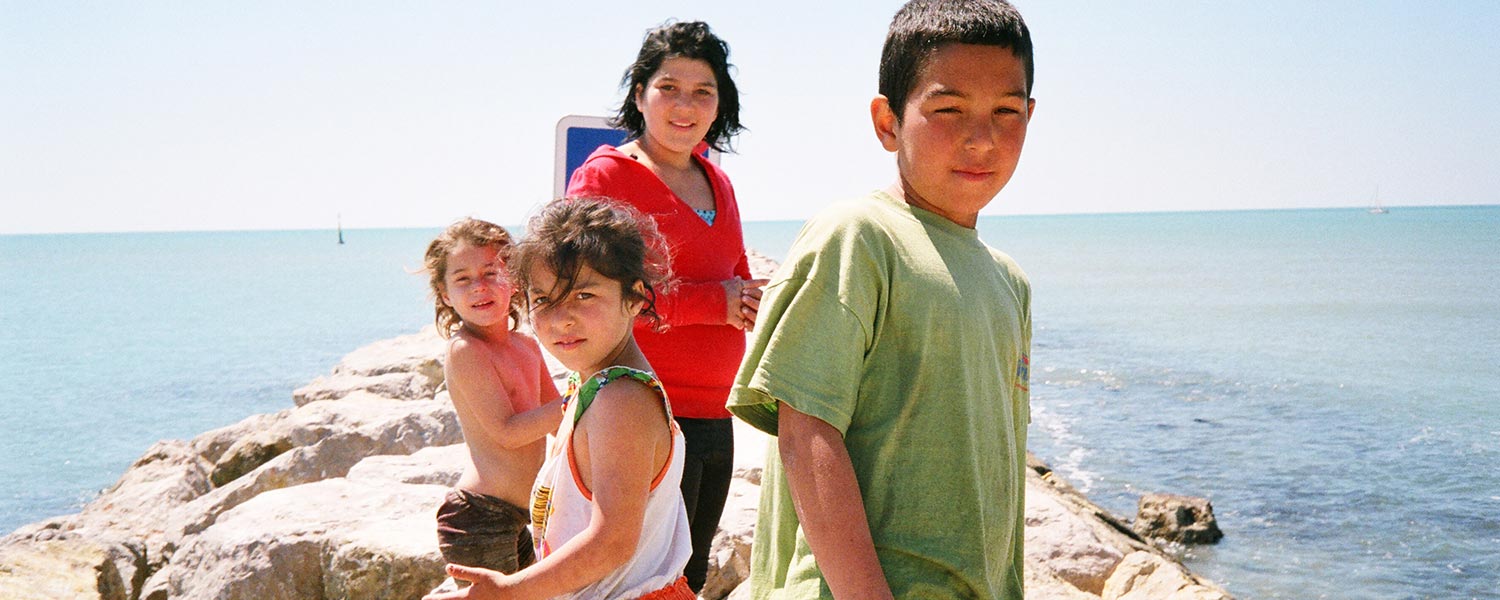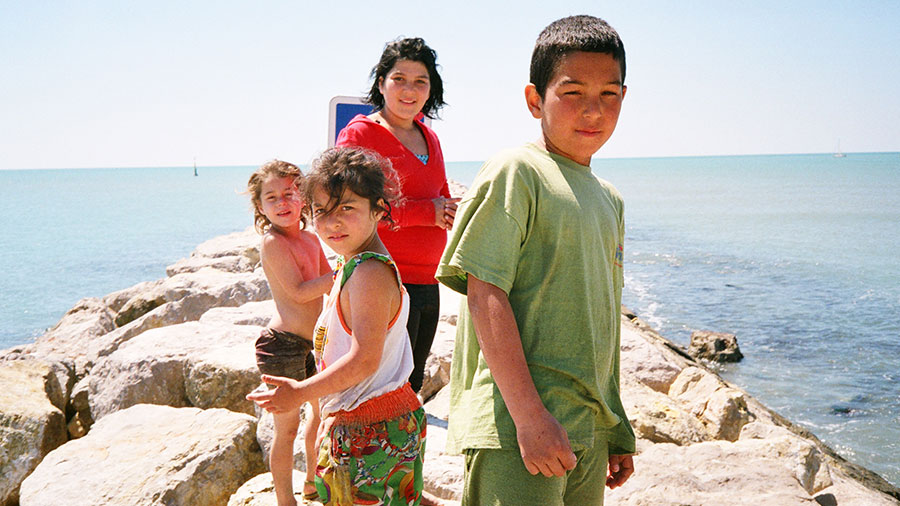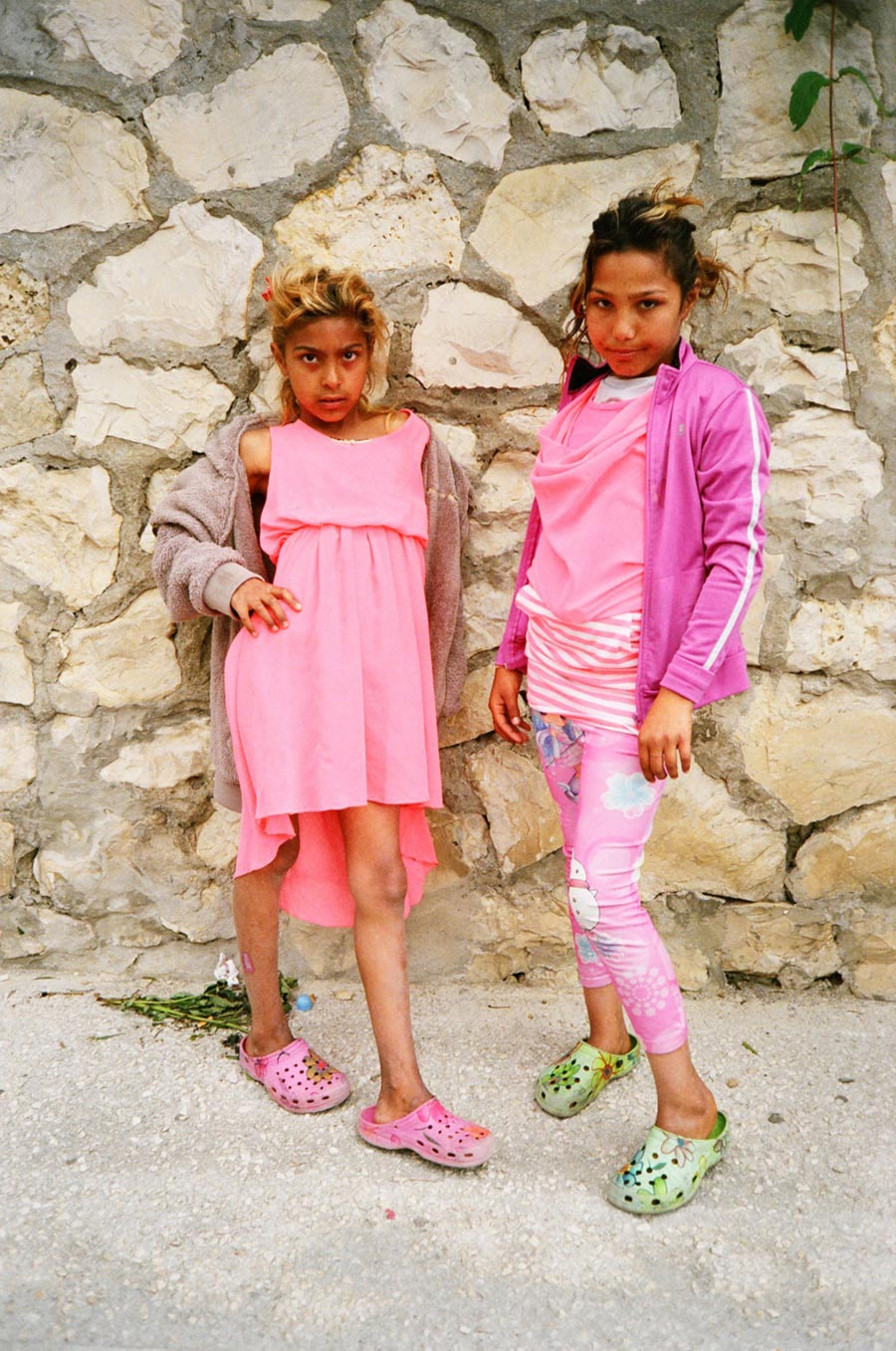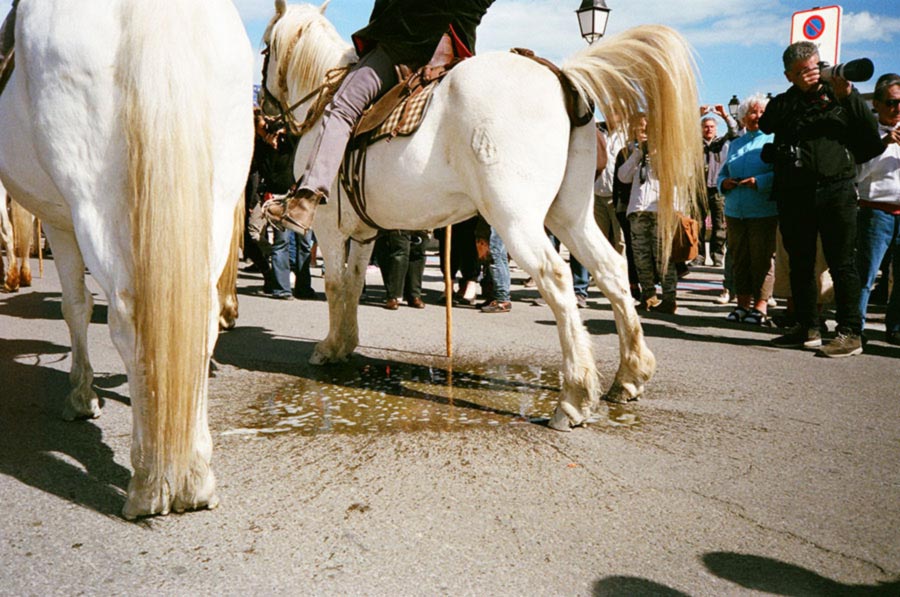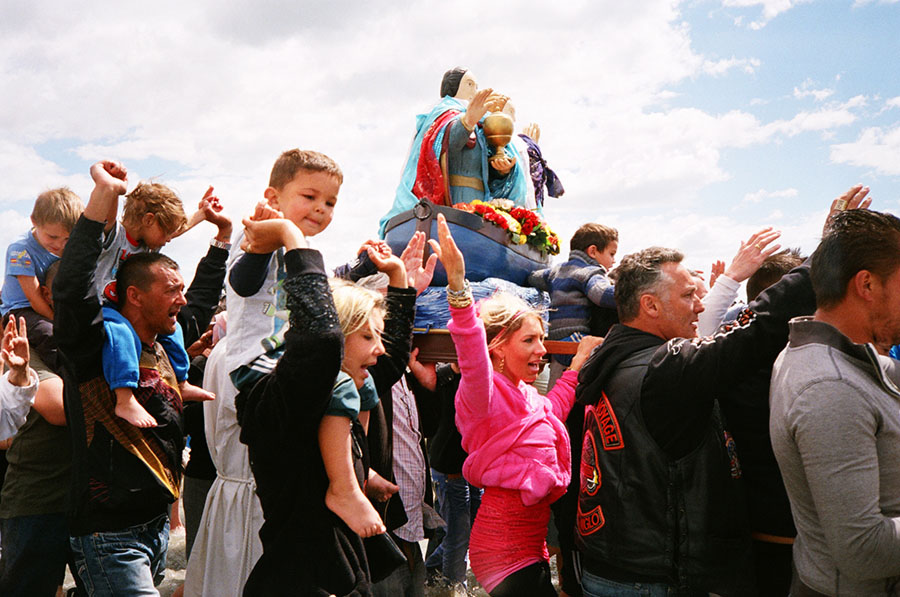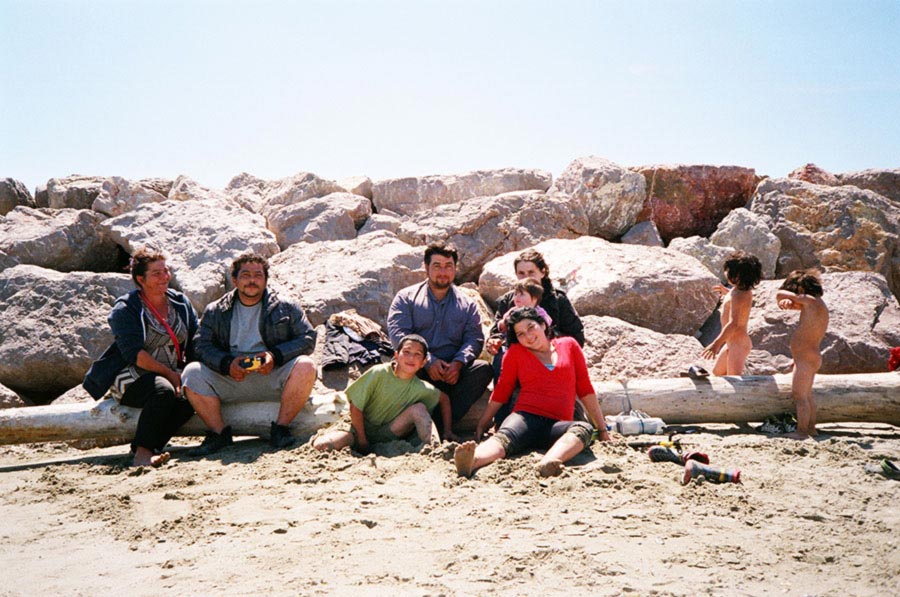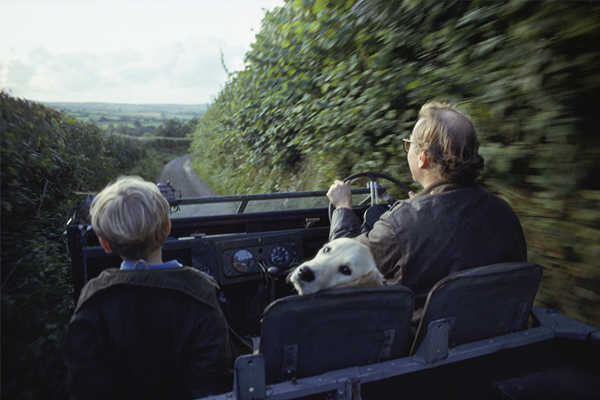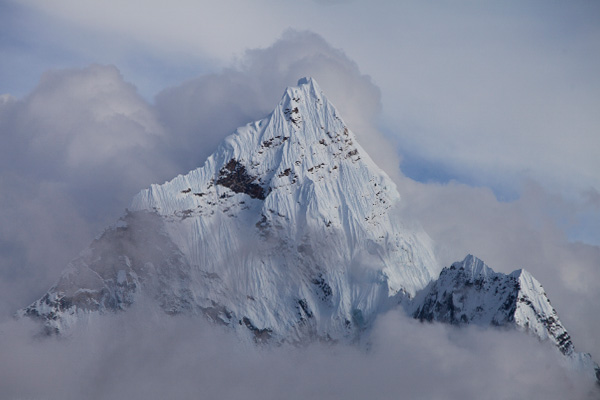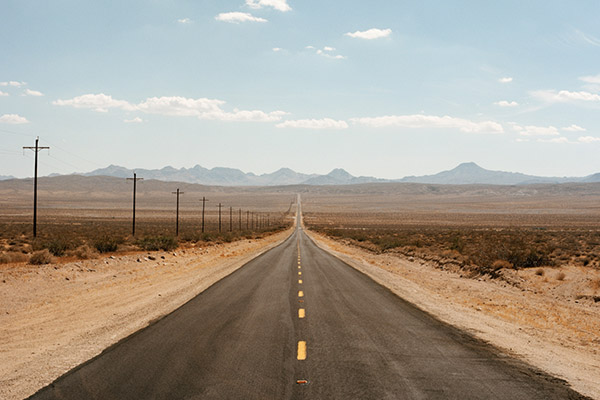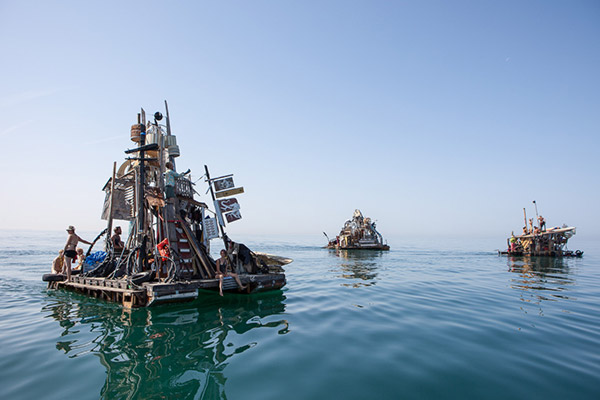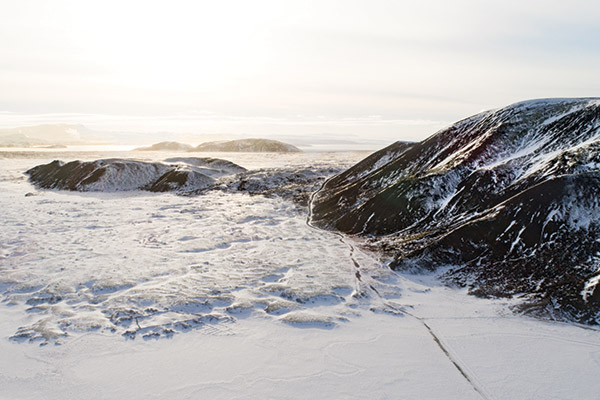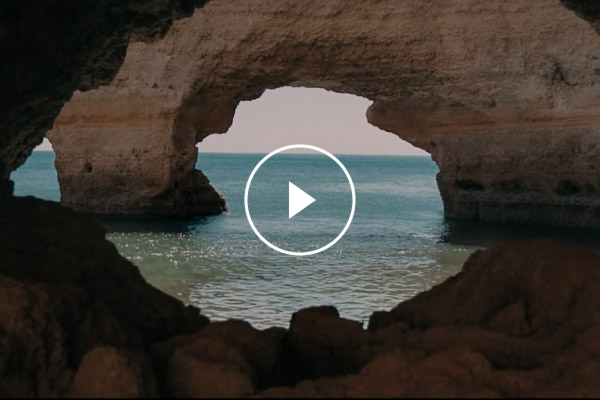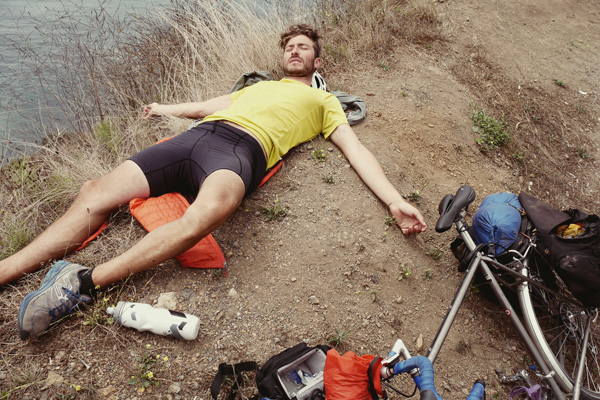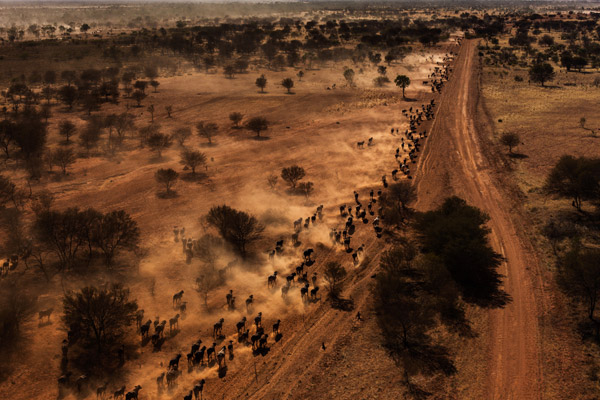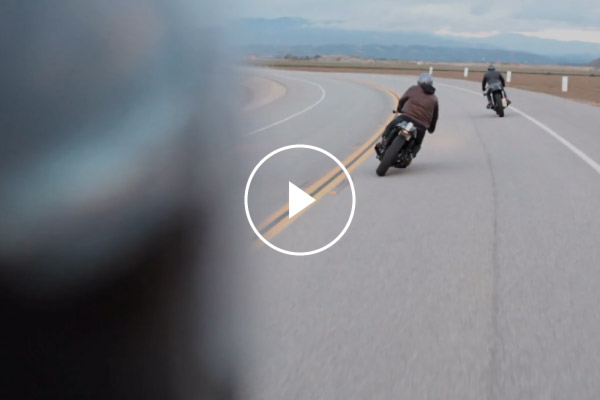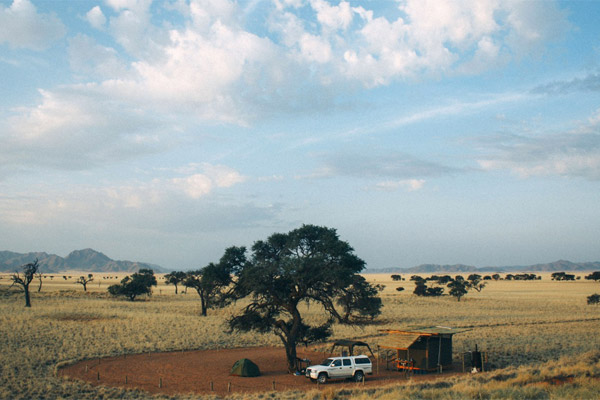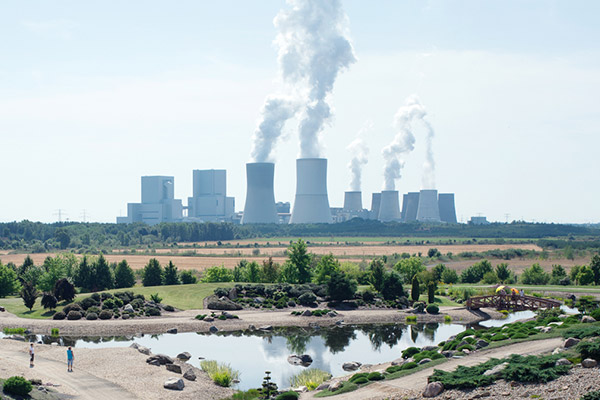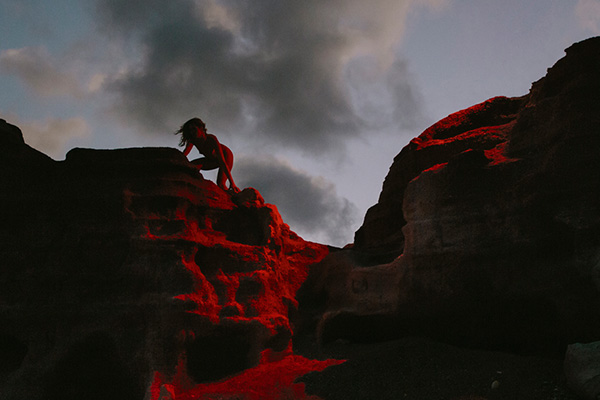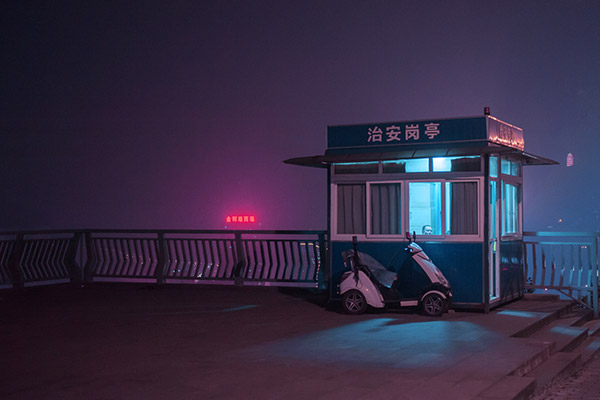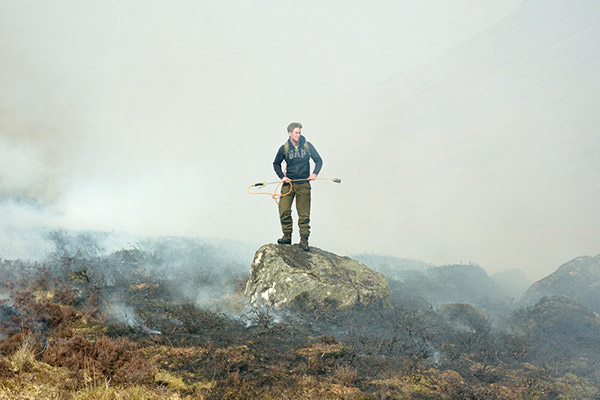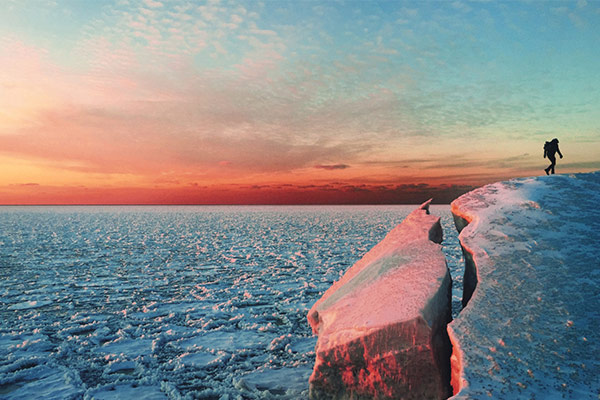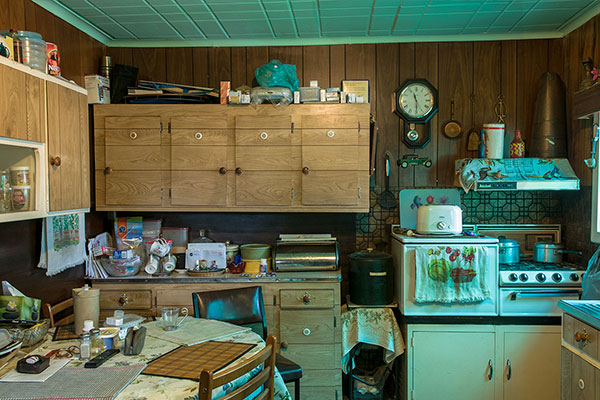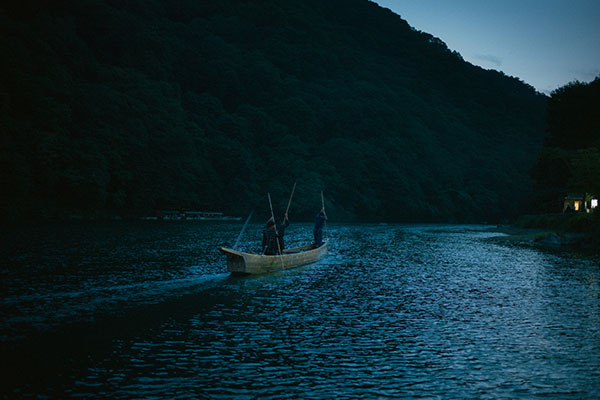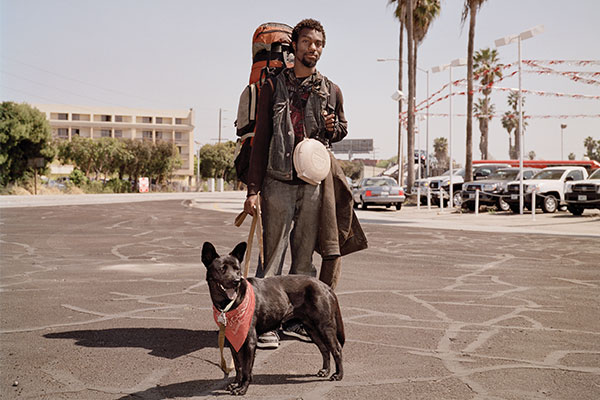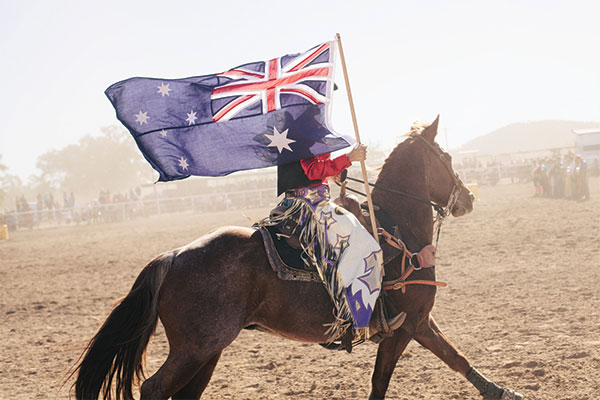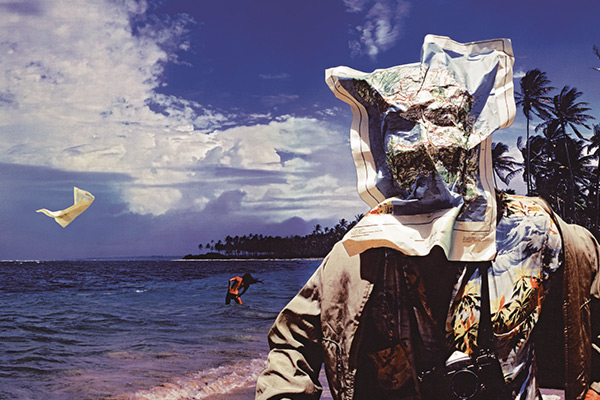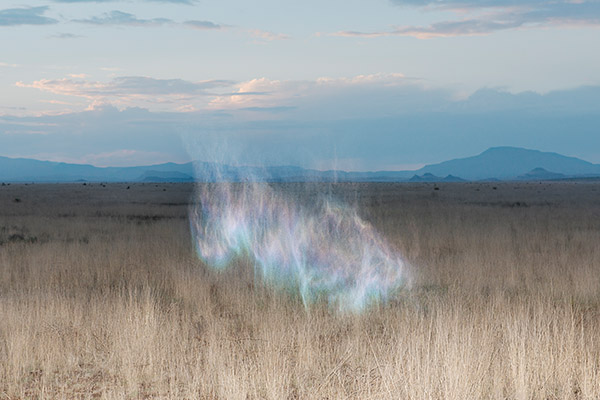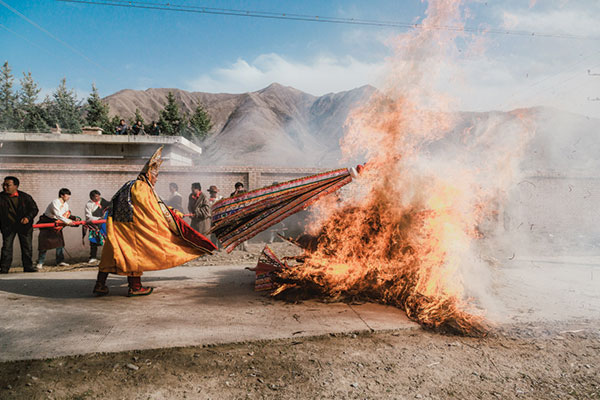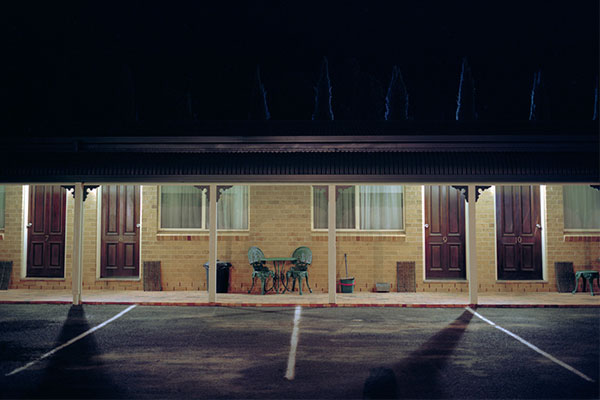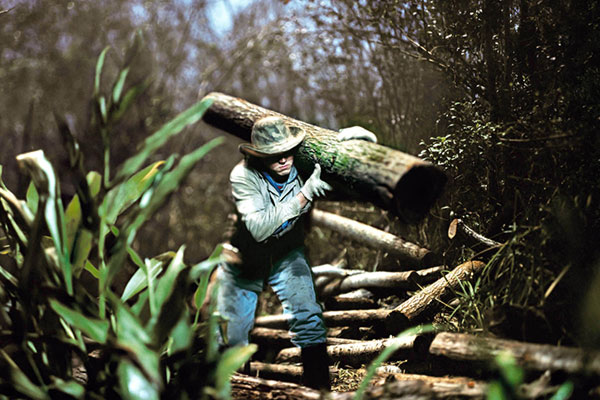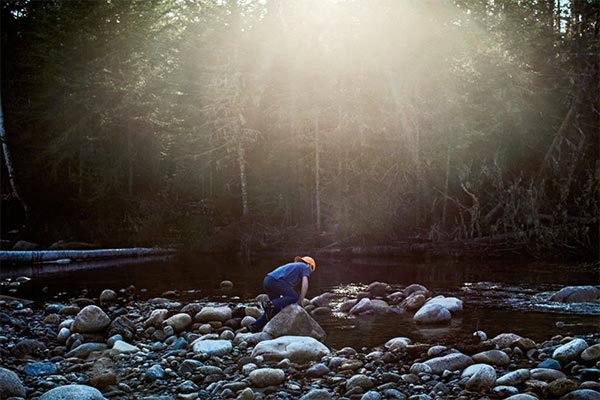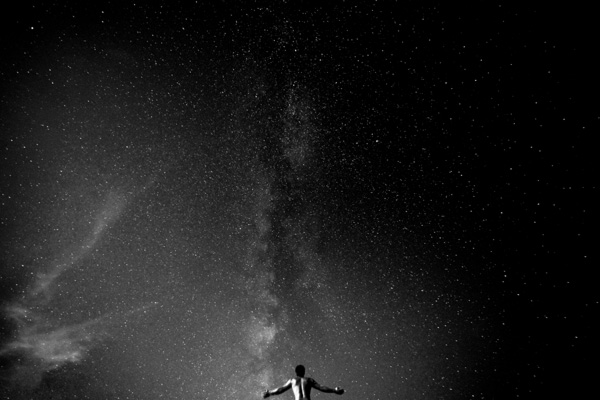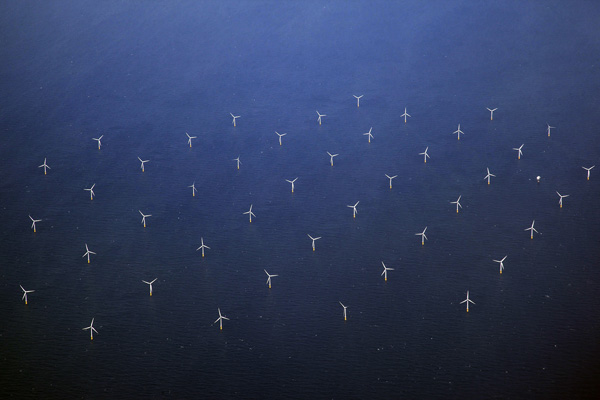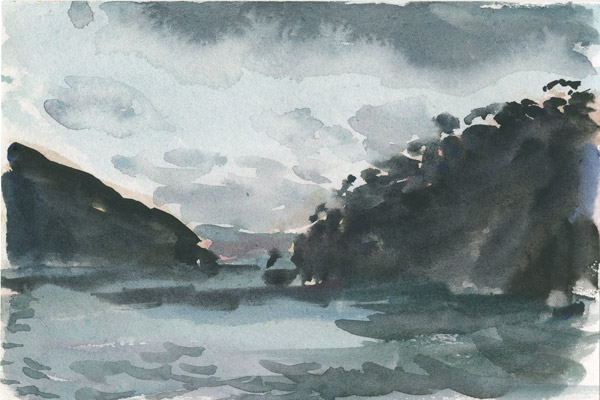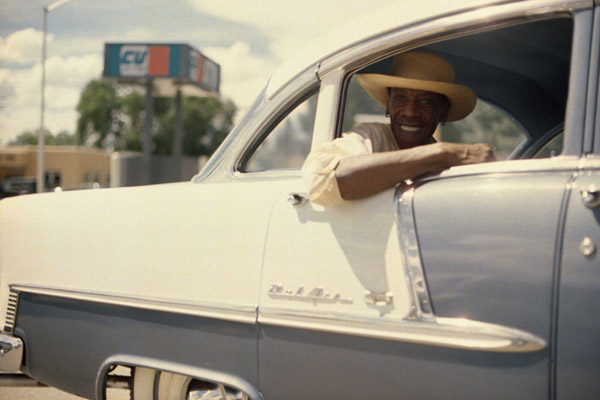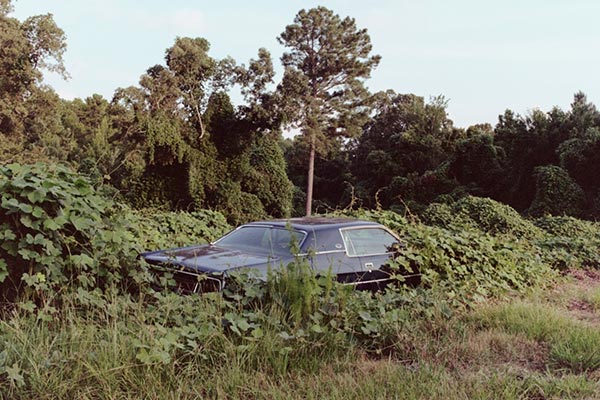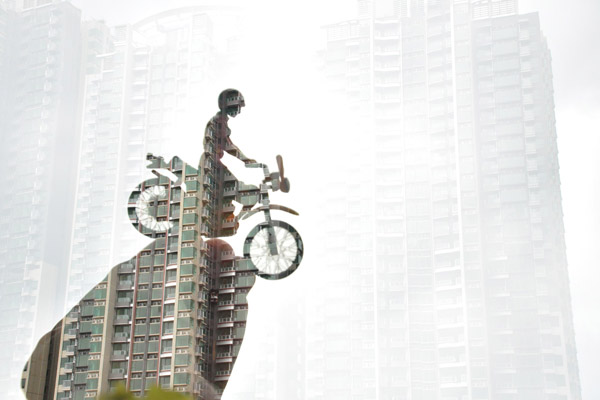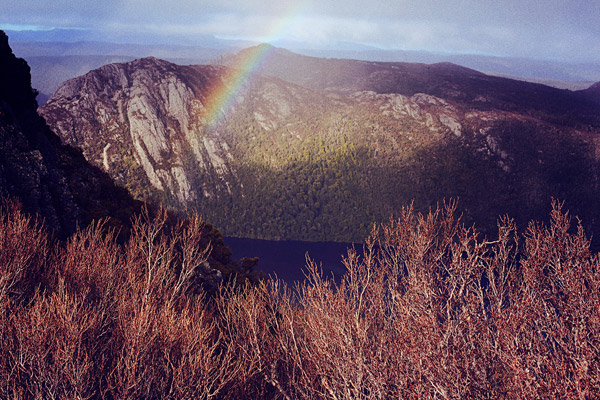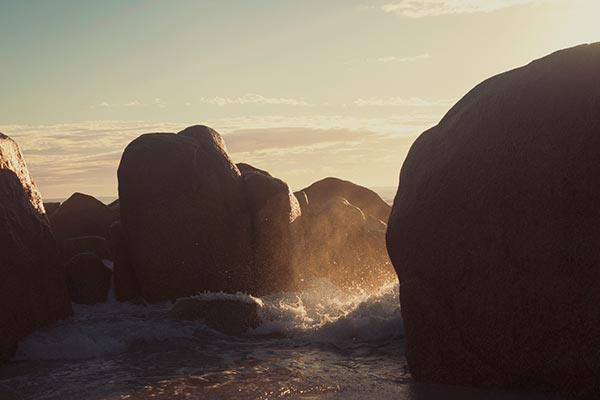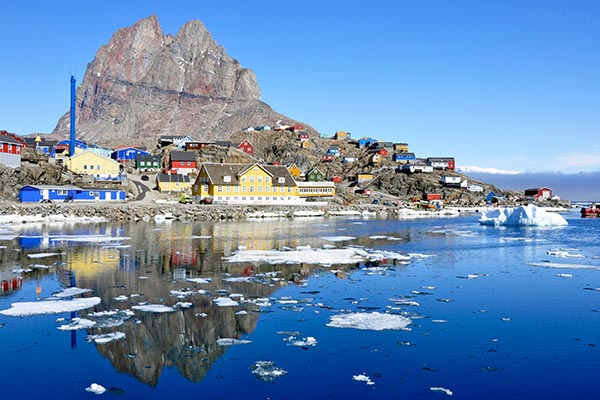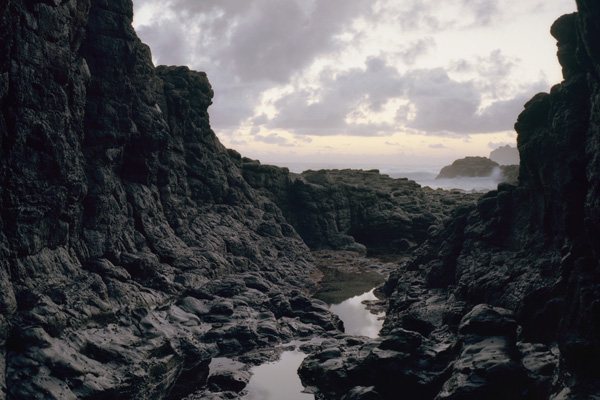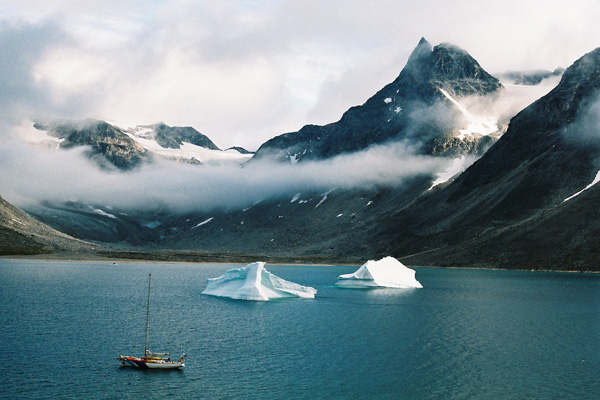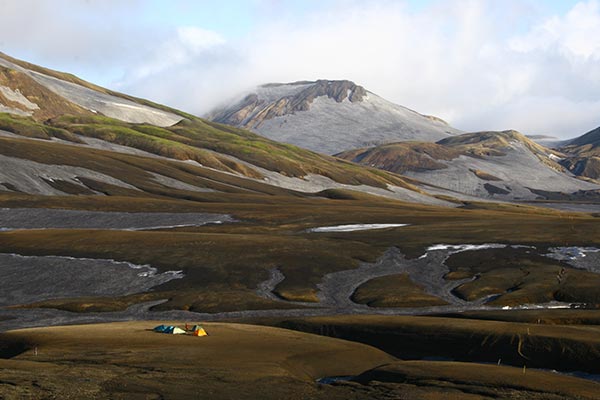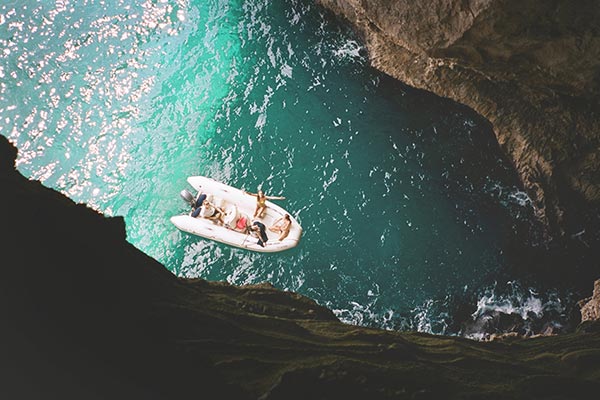‘Every May, Roma from all over the world descend on the small French coastal town of Saintes-Maries-de-la-Mer for ‘part religious event, part tourist phenomenon’. I followed the revellers, documenting the contrast of modern-day Gypsies and the countless tourist-carrying hippie vans that pour into the town every second year for the pilgrimage.
The procession involves everything from white stallions and dancing pilgrims, to waves of flamenco and jazz musicians, all following the statuette of Saint Sara through town to the water’s edge.
In that moment, everybody joins in a ‘ritual bath’ in the ocean. Once the procession is done, the participants celebrate the affirmation of faith and culture in the most sensible way possible – drinking for the rest of the night whilst singing and dancing in outstandingly sensual Flamenco circles.’
AHB: So tell me how you ended up – from Sydney Australia – at a Roma gypsy festival in a tiny town in France?
Isabella: I moved to Paris in May 2013, and spent a year and a half travelling around by myself.
The procession involves everything from white stallions and dancing pilgrims, to waves of flamenco and jazz musicians, all following the statuette of Saint Sara through town to the water’s edge.
I was interning at a photo agency called VII in Paris and all I wanted to do was get out of the office and take pictures. It was the weekend of my birthday and so I literally just typed into Google what events were happening in France and around Europe…and I came across, in the Lonely Planet, a very short paragraph description of this ‘gypsy pilgrimage’ in the very South of France, in a town that borders the Mediterranean Sea. I thought, “This is something I really want to be able to document.”
The procession involves everything from white stallions and dancing pilgrims, to waves of flamenco and jazz musicians, all following the statuette of Saint Sara through town to the water’s edge.
Do tourists dress up, come along for the ride?
I guess so… I guess it’s part of being able to play someone else for a day. Anyway, so they offered me a spot in their tent and I stayed with them that night.
You mention it’s a tourist affair as much as it is a ritual observance. How many people are attending?
There are hundreds of people. Before the procession, they have a very lengthy religious service inside a church, and once that’s over you’ll see hundreds of people queued outside the Church waiting for the procession to begin. I was told that every two years there is one specific family bloodline who are chosen to carry a sculpture of their patron Saint Sara down to the water’s edge to be submerged in the ocean to take a ritual bath.
I think it was about one or two very long streets before they reached the ocean, all crammed with people on both sides.
There are hundreds of people. Before the procession, they have a very lengthy religious service inside a church, and once that’s over you’ll see hundreds of people queued outside the Church waiting for the procession to begin.
The service, is it private?
It’s kind of private. I tried to get in there, it was very protected. You had to be from the Romani culture.
Romani people suffer a certain amount of discrimination elsewhere in Europe, was there a sense of solidarity in the town?
Yeah, the town hosts the pilgrimage every two years and the Romani really stick together. The Romani culture is quite a strong culture. The singing and dancing is a big part of how they express cultural relationships. The women, men, boys, and girls will start a circle, and they all sing, in their Romani language… I can only explain to you what I saw, I can’t really tell you what the role was of the main counterpart, but it looked like they were battling each other in song and dance. The song and dance is extremely powerful. It’s enigmatic, it’s amazing.
And the whole group sings and dances all night, but the circle is maintained strongly, like a fortress.
Is this the largest Romani gathering to occur?
I would say so, since they’re scattered all over Europe and the world. However, I’m not 100% certain.
There are also many Romani these days coming from Eastern Europe to Sweden, and it’s a very new cultural phenomenon to the Swedish. So now they have Romani in the streets, and there is a highly critical nature of their lifestyle because they’re not used to it. There’s going to have to be some kind of procedure implemented because begging is not…it’s just so shit, especially in winter.
It’s a really difficult culture to get my head around, in terms of accepting their way of life, because they’ve been around for so long, for hundreds of years, so although there are some downsides, you have to respect it as well. Their ideals and ways of living are separate and diverse.
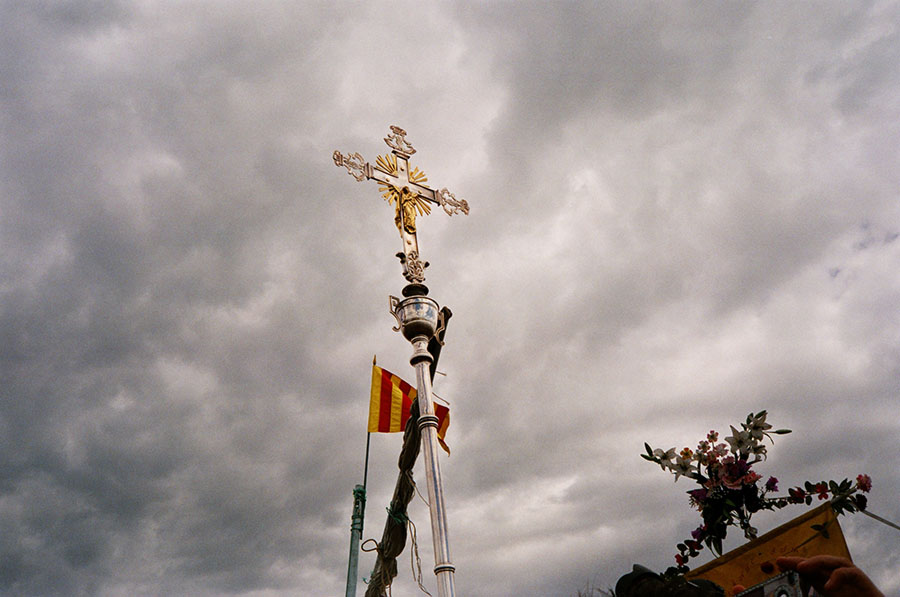
Is the culture delineated by family lines? Is it at all something you can take up?
You could adopt their way of life, but Romani is an age-old ethnicity of Indian origin and most Romani speak one of several dialects of the Romani language, an Indo-Aryan language, with roots in Sanskrit. So…no. You can’t just become a gypsy.
Can you describe the moment when everyone enters the water?
That’s what the photos are there for! No… I’ll have to take myself back.
It was an amazing, incredible sight to see hundreds of people on this beach. I didn’t get a picture of that. A lot of people squishing as close as they could to the plastic saints. The horses went in first, four or five horses into the water, then the saints were immersed, and then everybody else went in after that to take the ritual bath.
Systematically the first part took about five minutes, and then everyone else goes in and picks the saints up again and takes them back, through a different route, back to the Church.
A lot of people squishing as close as they could to the plastic saints. The horses went in first, four or five horses into the water, then the saints were immersed, and then everybody else went in after that to take the ritual bath.
Is travelling itself a big part of your practice?
It’s crucial. All the stories you see are from my travels. I feel like I was in a sense working while I was travelling, because I was always trying to see if I could do a story, or how I could do a story somewhere. So now that I’m in Australia, and temporarily with my feet on the ground, I still have that frame of mind.
For example I had started a story on the relationship between our Australian society and sharks, and I was trying to think of how to do a story like that and still give it a global essence, so that I could distribute it throughout the world. Because I feel like people enjoy when a certain culture or nation is portrayed in a way that identifies them as a group, dealing with issues so far from anywhere else. If that’s not too daft!
Do you find yourself constantly attached to your camera?
Not anymore. I don’t think it’s something I can really explain in short form…
Why do I like photography… I like that its a way that I can express myself. I find I’m a person who needs to be constantly stimulated, and I don’t mean that like watching a movie or reading a book.
Hmm.. Bigger question then, why do you like photography?
Why do I like photography… I like that its a way that I can express myself. I find I’m a person who needs to be constantly stimulated, and I don’t mean that like watching a movie or reading a book. More the fact that with photography, with the camera you are always discovering something new. You are always being put in the front line of a fresh experience. And most of the situations I tend to gravitate towards allow me to see something with new eyes.
It’s constantly seeing something that makes you feel refreshed and inspired. Like an injection of vitality in a sense.
But you have to be careful. When I was younger, I didn’t realise it, but that became my one of my only source of true happiness. It was something that I relied on to feel this vitality, and when it wasn’t there, it was like, “I have to do this in order to feel that”.
Whereas now I’m 28, and I’ve been outside for four years, working in the newspaper everyday, and doing these other stories, I realise that it’s no longer the one thing I really need. It’s plateaued now. I feel like I don’t even need to do it anymore. I feel like I could give it up. Do something else.
Is there other stuff that you produce when you’re doing a story? For instance, to take photojournalism further, would you like to write more?
I think any story that I do, for example if its to the degree of documenting an LGBT community in Russia, it has to be written by me, because I’m not only photographing them, I’m asking them to allow me into their intimate life. Especially the Russians – they’re very direct. They’ll tell you exactly what’s going on. It was kind of rough. And either they’re inviting me, or I’m inviting them to reveal everything. If I do the interviews, I have to write the story, that way it’s more personal as well.
During the gypsy pilgrimage, I didn’t speak to anyone. I was there to capture the aesthetics. If I went back I would talk to everyone there, but I think I was too shy because it was my first time documenting an event like that.
Often photographers and travellers operate by snapping and shooting their experiences, an impulsive approach. When you go on some of your trips, are you getting more involved with the people and the lifestyles they live?
During the gypsy pilgrimage, I didn’t speak to anyone. I was there to capture the aesthetics. If I went back I would talk to everyone there, but I think I was too shy because it was my first time documenting an event like that.
The ones I photograph purely to show a sense of culture and a beauty of aesthetics, that’s me as an outsider, and I don’t ask. If it’s something more intimate, like the Paris Plage series, I ask all of them. And if it’s a story with an issue that needs to be explored, I almost amalgamate myself – as if I fit into their space as one of them. Like… a frog… No, not a frog.
Like a… Weevil?
Like, shlck shlck.
‘It’s What Art Is’ goes live today @itswhatartis
Interview by Emilia at The Adventure Handbook, images by Isabella Moore
Receive a postcard from us sign up


